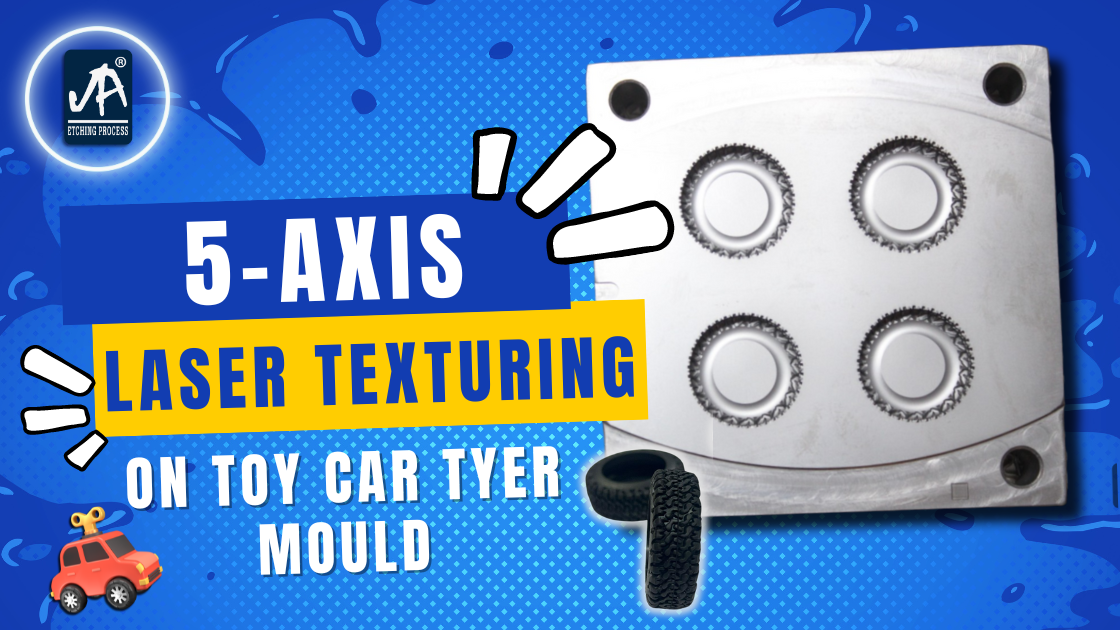Crafting Toy Car Treads: 5-Axis Laser Texturing exhibit
Imagine a toy car moving around and feeling the tiny treads of its tires gripping the floor below. Have you ever wondered how these small details are achieved? It’s all about precision craftsmanship, especially the treads on the toy car tires. In this blog, we’ll explore the fascinating process of creating these intricate details using advanced techniques like 5 axis laser texturing, and how it compares to traditional methods like chemical etching.
The Art of Toy Car Treads:
Toy cars are more than just toys; They are little wonders that spark our imaginations. From the sleek bodywork to the tiny wheels, every detail has been carefully designed to mimic its real-life counterpart. One of the main details that adds realism and functionality to a toy car is running on tires. These treads not only enhance the appearance of the car but also improve the grip and performance of the car on various road surfaces.
5-Axis Laser Texturing: Precision at Its Finest:
- Unleashing Precision: This is a cutting-edge technology that enables unparalleled precision when creating complex patterns and textures. Unlike traditional methods limited by manual processes, five-axis laser texturing uses a computer-controlled laser to etch precise details onto a mold surface.
- Crafting Realism: When it comes to toy car movement, realism is important. 5 axis laser texturing excels at capturing the fine details of a real tire tread, from the depth of the grooves to the pattern of the tread block. This realism enhances the overall appearance of toy cars, making them more lifelike and attractive to young enthusiasts.
- Enhancing Performance: Toy cars aren’t just for show – they’re for play! The tread of a tire plays an important role in determining its grip on different road surfaces. With 5-axis laser texturing, manufacturers can create treads that provide optimal traction, allowing toy vehicles to perform better on a variety of terrain.
Chemical Etching: A Traditional Technique Revisited:
- A Time-Honored Method: Chemical etching has been used for decades to create textured surfaces on a variety of materials. While not as precise as laser texturing, it offers a cost-effective and efficient way to add texture to toy car tire moulds.
- Limited Precision: Compared to 5-axis laser texturing, chemical etching has limitations in terms of precision and intricacy. It may not be suitable for creating highly detailed tire treads, but it can still produce satisfactory results for certain applications.
- Balancing Cost and Quality: For manufacturers looking to balance cost and quality, chemical etching can be a viable option. While it may not offer the same level of precision as laser texturing, it can still produce textured surfaces that enhance the realism and performance of toy car tires.
Choosing the Right Technique:
- Precision vs. Cost: The choice between 5-axis laser texturing and chemical etching ultimately comes down to the desired level of precision and the available budget. While laser texturing offers unmatched precision, it may come at a higher cost compared to chemical etching.
- Application-Specific Considerations: Manufacturers must also consider the specific requirements of their toy car designs. For highly detailed models that prioritize realism, 5 axis laser texturing may be the preferred choice. However, for more budget-conscious projects, chemical etching may provide a cost-effective solution without compromising quality.
Conclusion:
In the world of toy car manufacturing, every detail matters – especially when it comes to crafting realistic treads on tire moulds. Whether using advanced techniques like 5-axis laser texturing or traditional methods like chemical etching, manufacturers strive to create toy cars that captivate young imaginations and deliver an authentic play experience. By harnessing the power of precision crafting, toy car enthusiasts can enjoy hours of fun and excitement, zooming their miniature marvels across a variety of terrains with confidence and joy.


